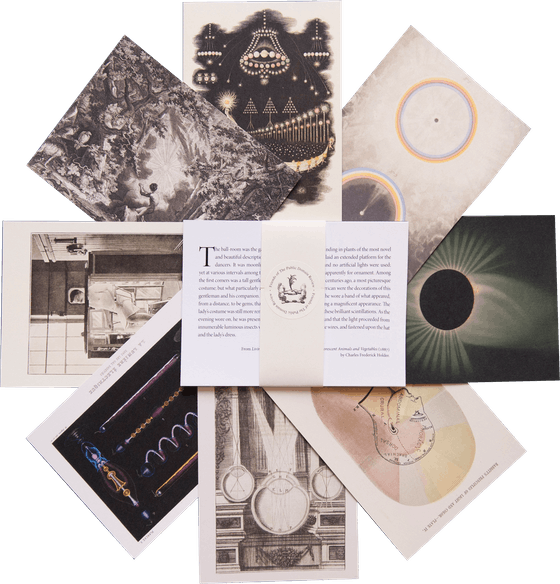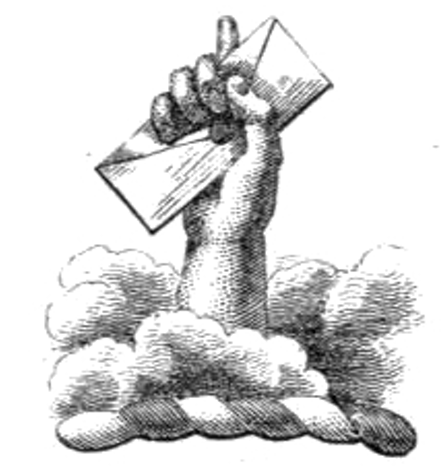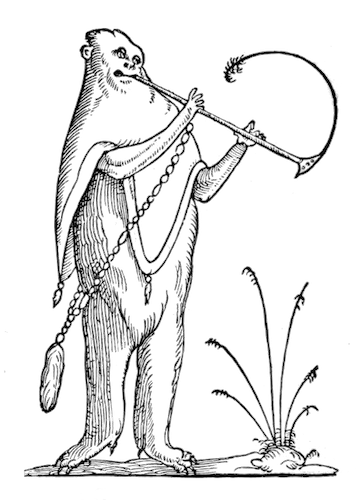
Vertiginous Accounts: Travels in the Air (1871 edition)
On a seaside holiday at Calais with his family in August 1869, French chemist and meteorologist Gaston Tissandier chanced to see a poster advertising a balloon launch from the central square the next day, as part of festivities celebrating Emperor Napoleon III. Going straight to the aeronaut’s hotel, he talked himself onto the voyage. Undaunted by wild nightmares of bursting balloons, his family’s strident pleas not to risk his life, and the blinding storm battering the coast, Tissandier arrived at the launch site at dawn, equipped only with life vests purchased from the Calais Humane Society. Despite a small trial balloon smashing into a bell tower and then being flung by the storm out over the wide expanse of the North Sea, the intrepid aeronauts jump into the wicker basket, a military band strikes up a march, and off the Neptune rises, 4,000 feet in a single bound.
Swept away by the sight of both the ant-like throng of spectators along Calais’ lilliputian shore below and a mirage image of the Calais-Dover ferry and other ships cast upon a cloud above, Tissandier is understandably unnerved that they are on a course not for the English coast as planned, but the open ocean. At 5,200 feet, the pilot notices that the cumulus clouds 2,000 feet below them are flying on a southwest course straight back to Calais, and, after dropping some of their sand ballast, they are soon floating over the Calais jetty — where Tissandier spies his younger brother Albert waving to him.
Continuing west along the French coast until nightfall, they throw out the Neptune’s grapnel when they sight a lighthouse-bearing cape, and the balloon and basket smash into a sand dune, scattering a terrified flock of sheep and shepherds. The lighthouse keeper greets them and promptly informs them that they have come down but a few hundred yards from the tomb of Pilâtre de Rozier — the first human being ever to leave earth (in 1783) in a Montgolfier, and who also became humanity’s first air crash victim in this very same dune field but two years later.
Every single one of Travels in the Air’s balloon expedition accounts presents this same exhilarating conjunction of chance, contingency, and caprice as the brave but often hapless aeronauts venture cloudward. Editor James Glaisher’s sober, scientific reports contrast with the unbridled Romanticism of his French colleagues’ — Tissandier, Wilfrid de Fonvielle, and Camille Flammarion — but all are united by the absolute novelty of their endeavor. Carried to dizzying heights where these gifted scientific communicators begin to build a picture of Earth’s subtle atmospheric organism, we are most moved by countless carnivalesque moments: coming face-to-face with spiders and butterflies a mile above the ground; a dutiful customs officer suspicious of coastal smuggling demanding the aeronauts’ passports; the discovery that tossing chicken bones from lunch will send the silken bubble further aloft as surely as if they had dropped a sandbag. Everywhere the French balloonists meet the same greeting as they return to earth: “Come down! Come down! Dinner is waiting for you!”
As chance would have it, just as James Glaisher was preparing Travels in the Air for publication in London, Napoleon III declared war on the Prussian Empire, leading to the German army’s blitzkrieg and siege of Paris in mid-September 1870. The first edition ended with Glaisher’s fervent call for redoubled commitment to the use of tethered “captive” balloons for scientific investigation. Penned but a month after the lifting of the siege in March 1871, this second and revised American edition of Travels in the Air (which includes half a dozen of Albert Tissandier’s striking chromolithographs) opens with Glaisher’s admission that his call had been regretfully met thanks to France’s misfortunes. For four months, balloons afforded over two million captive Parisians their sole means of contact with the rest of the nation. Sixty-seven manned flights carried military dispatches and letters out of the city — and also ferried homing pigeons, which later returned bearing microfilm messages. The gossamer invention, which before the siege had been universally derided as “good for nothing”, suddenly changed the conditions of modern warfare, while showing the world that Montgolfier’s nearly century-old caprice was simultaneously practical and patriotic.
Enjoyed this piece? We need your help to keep publishing.
The PDR is a non-profit project kept alive by reader donations – no ads, no paywalls, just the generosity of our community. It’s a really exciting model, but we need your help to keep it thriving. Visit our support page to become a Friend and receive our themed postcard packs. Or give a one-off donation. Already a supporter? A huge thank you for making all this possible.
“Mirage and luminous aureola.”
“Green falls into the sea.”
“A sunset as seen from the balloon.”
“Path of the balloon in its ascent from Wolverhampton to Langham.”
“Path of the balloon in its ascent from Wolverhampton to Cold Weston near Ludlow.”
“Beneath a beautiful mass of cumulus clouds.”
“Mr. Glaisher insensible at the height of seven miles.”
“Between two clouds, four miles high.”
“Rain fell pattering on the balloon.”
“The descent.”
“Path of the balloon over London (at night). 2nd October 1865.”
“Temperature of the air at different heights observed in the ascent and descent. 6th April 1864.”
“After a time the moon shone with increased brightness.”
“The Sun rose, flooding with light the whole extent of cloudland beyond.”
“A thunder-storm above Fontainebleau as seen from the balloon.”
“The Seine and the Marne as seen from the car in M. Flammarion’s second ascent.”
“Absolute silence reigns supreme in all its sad majesty.”
“A moonlight effect as seen from the balloon by M. Flammarion.”
“A descent among a herd of cattle.”
“The Sun appears like an immense beacon-light, placed upon layers of snow.”
“These fires seen from a distance were like lighthouses.”
“Lunar halo observed by M. Flammarion. (Night of 14–15 July, 1867.)”
“The Moon shines forth with peculiar brilliancy.”
“The orb of day has just appeared, and its golden disk rises among the purple clouds.”
“The satellite balloons.”
“The optical phenomenon observed by M. Flammarion.”
“The newcomers fall, pell-mell. one over the other.”
“‘It's the giant smoking his pipe,’ said someone.”
“Falling stars as observed from the balloon.”
“The fixity of the snow-like peaks of vapour was really very striking.”
“Shadow and luminous effect, as seen from the balloon.”
“Effect produced by a vault of clouds.”
“Descent of the Neptune at Cape Gris-Nez.”
“Circular effect of the clouds.”
“The balloon has burst!”
“After sunset, as seen from the balloon.”
“The branches of the trees bent beneath the car.”
“View of the ‘captive’ balloon at London.”
“Sunset above the Thames, as seen from the ‘captive’ balloon.”
Oct 7, 2025







